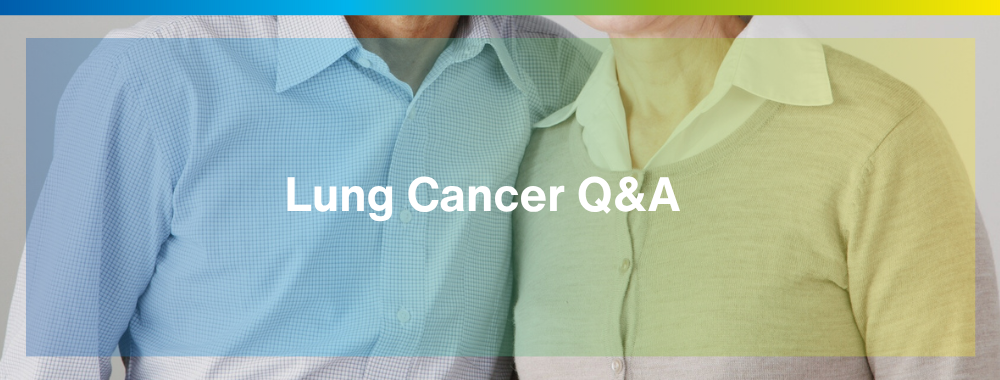
Disclaimer: You and your doctor are a team in your care. This article is intended for U.S. consumers and for informational purposes only and is not intended to be a substitute for medical advice. Talk with your doctor to learn more about your disease and treatment.
Twelve times a minute, we all engage in a vital action without even thinking about it—breathing. With little to no conscious effort, we use our lungs to breathe. And while our lungs support our very existence, we often don’t recognize the signs or symptoms that something isn’t quite right with our lung health.
At Daiichi Sankyo, we listen to patient advocacy groups, we hear their concerns and their efforts to raise awareness of lung health and risk factors for lung cancer, as well as the importance of screening. Through our collaboration with patient advocacy groups we deepen our understanding of the patient experience beyond our scientific understanding in order to help improve patient outcomes. For lung cancer, like most cancers, that starts with knowing the risk factors and identifying the disease early, when treatment may be the most effective.
“Awareness and early detection are key to battling lung cancer effectively,” says Dr. Ahmed Kotb, VP, Head of Global Oncology Medical Affairs. “By educating ourselves and participating in regular screenings, we can improve outcomes and potentially save lives.”
But don’t just take it from us. Below, get answers to frequently asked questions and listen to the voices of empowered patients.
What are the risk factors for lung cancer?
Risk factors for lung cancer include smoking, exposure to secondhand smoke, radiation therapy for other chest cancers, environmental factors like radon and asbestos, a family or personal history of lung cancer, a history of lung disease, and diet. While smoking remains the leading cause, non-smokers are not immune.

"Before I was diagnosed, I was very healthy, drank a lot of water. I stayed fit. I just never in a million years thought lung cancer because I am a non-smoker."
-Juanita S.
What are the symptoms of lung cancer?
Lung cancer symptoms may include persistent coughing, coughing up blood, chest pain, shortness of breath, wheezing, constant fatigue, and unexplained weight loss. These symptoms can be subtle, making it crucial to be vigilant about any changes in your health and to consult a doctor.
Who should be screened for lung cancer?
Screening is recommended for high-risk individuals, aged 50 to 80 who are current smokers or have quit within the past 15 years and have a 20-pack-year smoking history. A pack-year is calculated by multiplying the number of packs smoked per day by the number of years smoking. For example, smoking one pack per day for 20 years equals 20 pack years.
Why should I be screened for lung cancer?
Early detection leads to better outcomes. Studies show that screening high-risk individuals with low-dose CT (LDCT) scans can find lung cancer early when it’s easier to treat, increasing the likelihood of successful treatment. Additionally, screenings may reveal other conditions that need attention.

“It would have been nice to know that lung cancer was possible for anyone with lungs, not just individuals who have smoked or have a family history.”
-Victoria C.
What does lung cancer screening entail?
Lung cancer screening involves a painless and noninvasive spiral CT scan. The patient lies on a table that moves through a scanner, while an X-ray machine rotates around them, taking pictures. A computer then combines the pictures into a detailed image that can show the shape, size and location of any abnormalities in the chest that might signal the need for follow-up. The procedure takes less than 30 seconds.
After a screening, patients should follow up with their doctor to discuss results and any next steps. This is a critical part of the process, as nearly half of the patients who received positive results experience delays in getting the necessary follow-up care.
What is shared decision-making? Why is it important for lung cancer screening?
Shared decision-making is a collaborative process where patients and doctors discuss the benefits and risks of screening. It's important because a doctor is best equipped to understand their patient‘s medical history and risk factors. In most cases, before screening, a visit with a primary care doctor is required to discuss a patient’s history and the pros and cons of CT scans. This ensures informed decisions are made regarding your health.
Knowledge Empowers
Understanding lung cancer risk factors and the importance of screening can lead to early detection and better health outcomes.
We encourage you to share these risk factors and symptoms with your loved ones, so we can all maintain good lung health and be empowered in our healthcare.
To learn more, visit the websites of our partner patient advocacy groups offering resources and support for those affected by lung cancer:
Suggestions
The role of Medical Affairs is to bridge the gap between scientific research and real-world medical practice. After 17 years, I’ve seen firsthand ...
While our lungs support our very existence, we often don’t recognize that something isn’t quite right with our lung health. Get answers to questions about lung cancer and listen to empowered patients...
Hearing the words “you have cancer” for the first time was shocking. After 8 years of remission, our work has never felt more personal than when I heard them again...